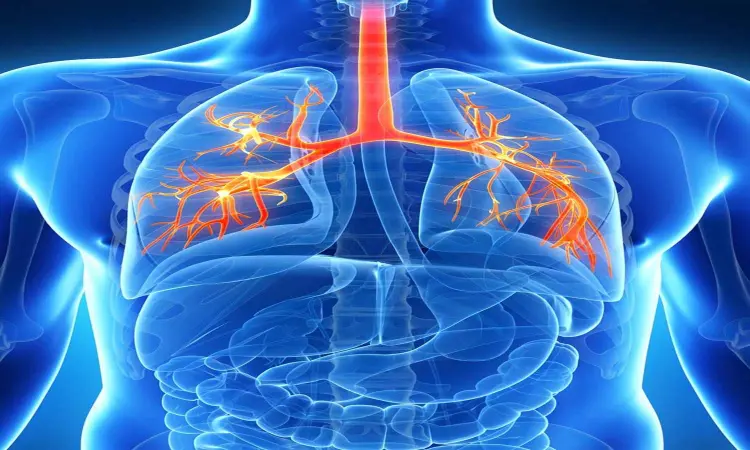- Home
- Medical news & Guidelines
- Anesthesiology
- Cardiology and CTVS
- Critical Care
- Dentistry
- Dermatology
- Diabetes and Endocrinology
- ENT
- Gastroenterology
- Medicine
- Nephrology
- Neurology
- Obstretics-Gynaecology
- Oncology
- Ophthalmology
- Orthopaedics
- Pediatrics-Neonatology
- Psychiatry
- Pulmonology
- Radiology
- Surgery
- Urology
- Laboratory Medicine
- Diet
- Nursing
- Paramedical
- Physiotherapy
- Health news
- Fact Check
- Bone Health Fact Check
- Brain Health Fact Check
- Cancer Related Fact Check
- Child Care Fact Check
- Dental and oral health fact check
- Diabetes and metabolic health fact check
- Diet and Nutrition Fact Check
- Eye and ENT Care Fact Check
- Fitness fact check
- Gut health fact check
- Heart health fact check
- Kidney health fact check
- Medical education fact check
- Men's health fact check
- Respiratory fact check
- Skin and hair care fact check
- Vaccine and Immunization fact check
- Women's health fact check
- AYUSH
- State News
- Andaman and Nicobar Islands
- Andhra Pradesh
- Arunachal Pradesh
- Assam
- Bihar
- Chandigarh
- Chattisgarh
- Dadra and Nagar Haveli
- Daman and Diu
- Delhi
- Goa
- Gujarat
- Haryana
- Himachal Pradesh
- Jammu & Kashmir
- Jharkhand
- Karnataka
- Kerala
- Ladakh
- Lakshadweep
- Madhya Pradesh
- Maharashtra
- Manipur
- Meghalaya
- Mizoram
- Nagaland
- Odisha
- Puducherry
- Punjab
- Rajasthan
- Sikkim
- Tamil Nadu
- Telangana
- Tripura
- Uttar Pradesh
- Uttrakhand
- West Bengal
- Medical Education
- Industry
3D Imaging-Assisted Segmentectomy effective treatment for Localized Bronchiectasis: Study

Surgery is essential for the effective management of bronchiectasis. Segmentectomy, while a challenging procedure, has become more attainable due to advancements in thin-slice CT scans and three-dimensional imaging. These innovations improve the understanding of the anatomy before surgery and enhance the planning process. Recent study aimed to evaluate the effectiveness of utilizing three-dimensional (3D) imaging in assisting segmentectomy for the treatment of localized bronchiectasis. The research conducted a retrospective analysis on 34 patients with bronchiectasis who underwent segmentectomy between 2021 and 2023. The average surgical time for segmentectomy was 157.7 minutes, with an average intraoperative blood loss of 115.9 ml. Postoperative measures included an average of 6.5 days of tube placement, with a drainage volume of 724.7 ml and an average hospital stay of 8.2 days. Complications post-surgery included 2 cases of pneumothorax, 2 cases of air leaks, and 4 cases of pneumonia. Follow-up showed symptom improvement in most patients over an average period of 14.3 months, with only two cases of recurrence.
Advancements in Preoperative Imaging
The paper highlighted that advancements in thin-slice CT and 3D imaging have enabled better preoperative anatomical understanding and surgical planning, making segmentectomy a viable option for treating localized bronchiectasis. The study excluded patients with non-localized bronchiectasis and those who were unfit for extensive resection. Patients selected for segmentectomy had well-defined lesions within a single lung lobe, chronic cough, sputum, or recurrent hemoptysis.
Surgical Techniques and Postoperative Care
During segmentectomy, meticulous identification of pulmonary lobar vessels and bronchi was vital, aided by advanced imaging techniques. The surgical procedure involved precise dissection of segmental arteries, veins, and bronchi, with an emphasis on maintaining lung function. Post-surgical care included antibiotics, physical therapy, and management of potential complications. Overall, segmentectomy demonstrated acceptable postoperative outcomes, with a low rate of complications and mortality.
Importance of 3D Imaging and Follow-up
The study emphasized the importance of proper preoperative assessment, patient selection, and meticulous surgical techniques. Utilization of 3D imaging enhanced surgical precision, reduced intraoperative complications, and improved patient outcomes. Post-surgery, monitoring and follow-up were crucial in assessing symptom resolution and detecting potential recurrences.
Conclusion
The paper concluded that segmentectomy assisted by 3D imaging is a viable treatment option for localized bronchiectasis, offering favorable postoperative morbidity and mortality rates. Patients mostly experienced symptom relief post-surgery, with minimal instances of recurrence. The study recognized limitations in sample size and patient characteristics, but overall supported the efficacy and feasibility of 3D imaging-assisted segmentectomy in treating localized bronchiectasis.
Research Summary
In summary, the research demonstrated the benefits of integrating advanced imaging technology in surgical procedures for bronchiectasis, showcasing positive outcomes and encouraging results in managing localized bronchiectasis through segmentectomy.
Key Points
- The study evaluated the effectiveness of utilizing three-dimensional (3D) imaging in assisting segmentectomy for the treatment of localized bronchiectasis, showing favorable postoperative outcomes with low complications and mortality rates.
- Advancements in thin-slice CT and 3D imaging have improved preoperative anatomical understanding and surgical planning, making segmentectomy a viable option for treating localized bronchiectasis.
- Surgical techniques during segmentectomy focused on meticulous identification of pulmonary lobar vessels and bronchi aided by advanced imaging, with an emphasis on precise dissection of segmental arteries, veins, and bronchi while maintaining lung function.
- Postoperative care included antibiotics, physical therapy, and monitoring for complications, with an average hospital stay of 8.2 days and an average follow-up period of 14.3 months showing symptom improvement in most patients and minimal recurrence rates.
- Proper preoperative assessment, patient selection, and meticulous surgical techniques were emphasized, with 3D imaging enhancing surgical precision, reducing complications, and improving patient outcomes in segmentectomy for bronchiectasis.
- The research concluded that segmentectomy assisted by 3D imaging is an effective treatment option for localized bronchiectasis, demonstrating the benefits of integrating advanced imaging technology in surgical procedures for managing the condition.
Reference –
Zhiwei Yan et al. (2025). Three-Dimensional Imaging Assisted Segmentectomy In The Treatment Of Localized Bronchiectasis: A Retrospective Analysis. *Journal Of Cardiothoracic Surgery*, 20. https://doi.org/10.1186/s13019-024-03249-x.


